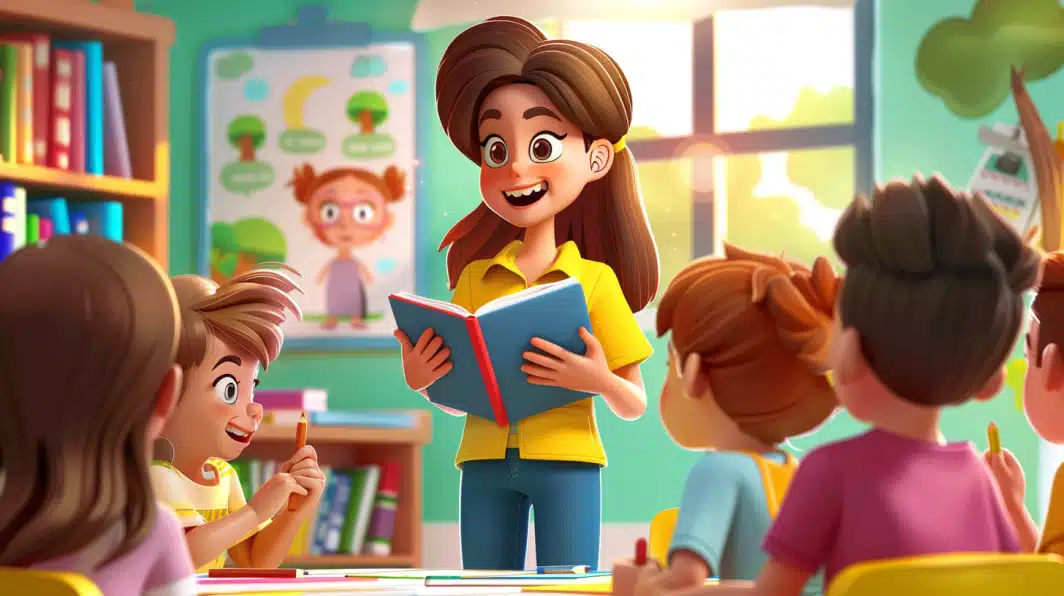Teaching closed syllables effectively is a crucial skill for educators, as these syllables form the foundation for reading and spelling success.
However, many teachers struggle to find engaging and practical strategies to help students master this essential concept.
In this blog post, we’ll explore a range of effective strategies designed to help educators confidently teach closed syllables.
From hands-on activities to multisensory approaches, you’ll discover innovative ways to introduce and reinforce closed syllables in your classroom.
Implementing these strategies will empower your students to become confident readers and spellers, setting them up for long-term academic success.
Let’s explore the best practices for teaching closed syllables.
Understanding Closed Syllables

Closed syllables are a fundamental concept in English phonics. They are characterized by a single vowel followed by one or more consonants.
This syllable structure creates a short vowel sound, making it a crucial building block for early readers. By definition, a closed syllable ends in a consonant and contains only one vowel.
The presence of the final consonant(s) “closes” the syllable, resulting in a short vowel sound. Simple examples of closed-syllable words include “cat,” “bed,” and “help,” which follow the consonant-vowel-consonant (CVC) pattern.
Teaching Strategies for Closed Syllables
1. Initial Steps
It’s important to begin by labeling and explaining basic concepts to understand closed syllables clearly.
- Introduce the idea of consonants and vowels, using visual aids to help students identify and label them in words.
- A simple activity to reinforce this concept is having students underline consonants and circle vowels in basic words.
- When explaining the concept of closed syllables, start with simple words like “cat” or “desk.” Demonstrate how the consonant at the end of the syllable “closes” it, resulting in a short vowel sound.
- Write CVC words on the board and have students practice reading them aloud. Encourage interactive exercises where students create examples of closed-syllable words using classroom objects or pictures to create an engaging learning experience.
2. Progression
As students become more comfortable with the concept of closed syllables, the complexity of the words gradually increases.
- Begin with short CVC words like “dog” or “bed” to build a solid foundation.
- Once students have mastered these simple closed syllables, introduce longer, multisyllabic words such as “napkin” or “magnet.”
- Explain how to break down these multisyllabic words into individual closed syllables.
- Use a step-by-step approach to scaffold learning, providing ample practice with each level of complexity before moving on to more difficult words.
- This gradual progression helps students build confidence and skills in recognizing and reading closed syllables.
3. Visual and Interactive Methods
Incorporate visual aids and interactive activities into your teaching of closed syllables to enhance understanding and retention.
- Create diagrams that illustrate the structure of closed syllables, highlighting the vowels and consonants.
- Use flashcards to reinforce the recognition of closed syllable patterns.
- Engage students with word-building games and exercises.
- For example, provide letter tiles for students to form closed-syllable words or have them sort words into categories based on syllable type.
- Interactive learning through educational apps or group activities promotes collaboration and peer learning, making the process more engaging and effective.
Lesson Planning with Closed Syllable Words

1. Using Word Lists
Utilizing structured word lists is an effective way to support scaffolded learning and ensure a gradual progression in phonics instruction.
- Create lists of closed syllable words categorized by their complexity, providing a range of lists to cater to different learning stages.
- For beginners, include simple words like “at,” “it,” and “bug” to help them grasp the basic closed syllable pattern.
- As students master these simple words, move on to medium-level words such as “lunch” and “craft.”
- For advanced students, include more complex words like “sprint” and “scratch” to challenge their skills further.
- Ensure the word lists follow the closed syllable pattern and regularly update and expand them to include new words.
2. Creating Phonics Exercises
Develop engaging phonics exercises incorporating word lists to reinforce learning and enhance reading skills.
- Use the word lists to create spelling tests that reinforce correct spelling and pronunciation of closed-syllable words.
- Design reading passages and exercises that include a variety of closed-syllable words.
- Develop comprehension questions and activities based on texts that prominently feature these words.
- Use games and digital tools to make phonics exercises more interactive and engaging.
- For example, create a matching game where students match words with their definitions or images, making learning more enjoyable and memorable.
3. Differentiation
Tailoring lesson plans is essential to accommodating students’ varying proficiency levels and ensuring that all learners are appropriately challenged and supported.
- Assess student proficiency regularly to determine the appropriate complexity level for each student.
- For advanced students, introduce multisyllabic closed-syllable words like “napkin,” “magnet,” and “basket” to further challenge their phonics skills.
- Develop activities that break down these multisyllabic words into individual closed syllables, reinforcing the concept and enhancing their ability to decode complex words.
- Implement individualized learning plans to cater to each student’s needs, using differentiated instruction techniques to provide targeted support and enrichment.
Activities to Reinforce Closed Syllables

1. Sorting and Categorizing
Implementing activities that involve sorting and categorizing words can help students recognize patterns and reinforce their understanding of closed syllables.
Have students categorize words into single-syllable and multisyllabic closed-syllable words.
For example, provide a mix of words like “cat,” “napkin,” “desk,” and “magnet,” and ask students to sort them into one-syllable and two-syllable groups.
Another sorting activity involves having students sort words based on the short vowel sound they contain.
Create columns for each short vowel sound (/a/, /e/, /i/, /o/, /u/) and have students place words under the correct column.
Use charts and diagrams to represent sorted words, visually reinforcing closed syllable patterns.
2. Interactive Learning
Engage students with hands-on activities and games to make learning closed syllables fun and interactive.
Provide word cards with various closed-syllable words for students to practice building and decoding.
Give students letter cards and ask them to form closed-syllable words, then decode and read them aloud.
Incorporate physical movement by having students clap and count syllables in words.
For example, say a word like “magnet,” and have students clap twice to indicate the two syllables while counting them aloud.
To make learning more engaging, use digital tools or board games that match, build, and decode closed-syllable words.
3. Reading Fluency
Create reading activities incorporating closed-syllable words to enhance reading fluency, accuracy, and expression.
Develop short reading passages that feature closed-syllable words.
For example, provide a passage like “The cat sat on the mat. The bell rang, and the class began” for students to practice reading.
Regularly assess students’ reading fluency by having them read passages aloud.
Focus on accuracy in pronouncing closed-syllable words and expressions in reading.
Addressing Common Challenges
1. Multisyllabic Words
To help students master the breakdown and decoding of multisyllabic words, teach them to identify and practice closed syllables within these longer words.
Demonstrate how to segment words like “basket” into “bas-ket” and “rabbit” into “rab-bit,” emphasizing that each part is a closed syllable.
Provide a list of multisyllabic closed-syllable words for practice, such as “basket,” “rabbit,” “napkin,” and “magnet.”
Have students clap out the syllables and label each part of the word as a closed syllable.
Give clear, step-by-step instructions on dividing words into syllables, using visual aids like syllable division charts to support their understanding.
2. Exceptions and Irregularities
Explicitly address exceptions and irregularities to help students understand and navigate words that don’t follow standard closed syllable patterns.
Introduce students to common closed syllable exceptions, such as “wild,” “kind,” “pint,” and “old,” and explain how they differ from regular patterns.
Create a chart of exception words and their correct pronunciations to help students recognize and remember these irregularities.
Ensure students have ample opportunities to practice reading and spelling regularly, except for closed-syllable words.
Mix regular and exception words in spelling tests and reading passages to reinforce their understanding and ability to distinguish between the two types.
Use visual aids to highlight exceptions and compare them to regular closed-syllable words.
For example, create a side-by-side chart showing regular closed syllables and their exceptions.
Conclusion
Teaching closed syllables is a crucial component of effective phonics instruction.
By understanding the teaching strategies for closed syllables, educators can create engaging lessons that help students master this essential concept.
Incorporating various activities, such as sorting, interactive games, and reading fluency exercises, can reinforce learning and make the process enjoyable for students.
While challenges like multisyllabic words and exceptions may arise, addressing them head-on and providing ample practice will enable students to navigate these hurdles successfully.
As you implement these strategies in your classroom, remember that your guidance and support are key to helping your students unlock the power of reading through their mastery of closed syllables.








